Self-watering plant pots are designed to provide plants with a gradual and consistent supply of water. They make the process of maintaining plants easier and more efficient.
As the trend of using self-watering planters to look after plants in 2025 continues to grow, here are the top trends to watch out for.
Table of Contents
An overview of the self-watering plant pot market
Top 5 self-watering planter trends in 2025
Summary
An overview of the self-watering plant pot market
The value of the global self-watering plant pot market is projected to go from USD 302.9 million in 2023 to USD 649.7 million in 2030 at a compound annual growth rate (CAGR) of 8.6%.
The main driver of the market is an increasing interest in indoor gardening. Due to rising urbanization and limited available gardening space, there is a growing need for balcony planters or small-scale greenery installations. Self-watering plant containers are ideal for container-grown flowers and plants, further boosting market expansion.
The trend of sustainable and eco-friendly living is also contributing to the demand for self-watering pots. Self-watering flower containers promote efficient use of water and reduce water waste.
Top 5 self-watering planter trends in 2025
1. Large planters
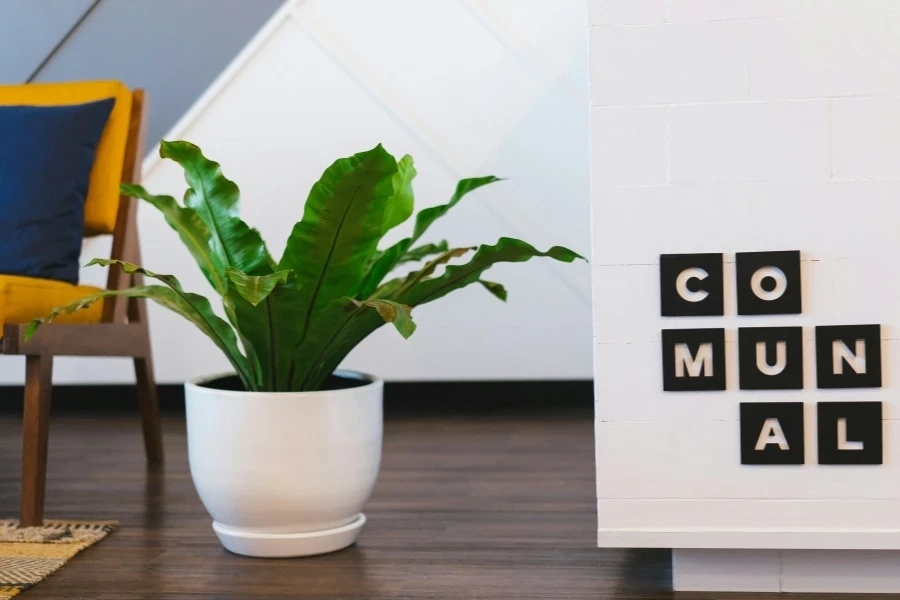
Large self-watering planters are ideal for customers interested in planting large shrubs or a diverse mix of plants. Large self-watering plant pots’ ample space gives plants’ roots more room to develop, and self-watering planters with large basins can hold more water in their reservoir, ensuring a longer-lasting supply of water.
Containers with a width of at least 10 inches are ideal. Large, rectangular self-watering planter boxes are another popular design, their angular shape adding a touch of style to a backyard, front porch, or window sill.
According to Google Ads, the term “large self-watering planter” attracted a search volume of 2,400 in April and 3,600 in August 2024, representing a 50% increase over four months.
2. Compact or vertical pots
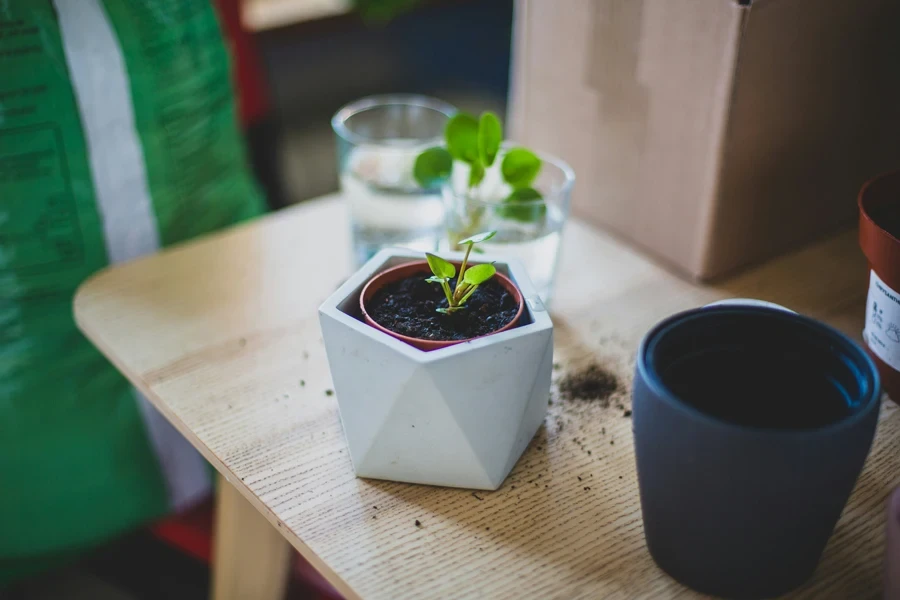
In contrast to the trend of large planters, compact or vertical self-watering planters are gaining traction with the rise of urban living and small apartments. Small self-watering plant pots are favored for their ability to fit on top of desks, nightstands, or display shelves.
Some self-watering wall planters come with a tiered or stacked design that is ideal for growing multiple plants within a small footprint. Many compact and vertical self-watering gardens are also constructed from lightweight materials like recycled plastic, making them environmentally friendly as well as easy to move around or hang on walls.
The term “small self-watering pots” attracted a search volume of 260 in April and 320 in August, which represents a 23% increase over four months.
3. Sustainable materials
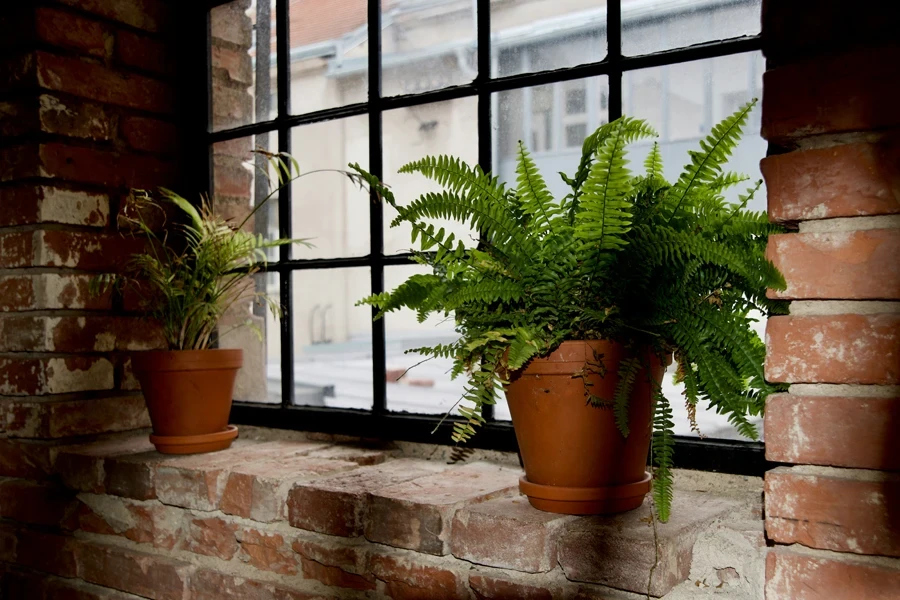
As awareness around our environmental impact grows, self-watering planters made from sustainable materials are emerging as a popular choice among eco-conscious customers. Many eco-friendly self-watering planters are also non-toxic, which makes them safe for growing edible plants.
Examples of sustainable materials include recycled plastic, wood, or clay. Terracotta self-watering planters boast warm tones and a natural aesthetic that can enhance any garden or living space. Glass self-watering planters are also an option for customers looking to reduce plastic waste.
“Eco-friendly plant pots” saw a 22% increase in search volume over the four months between April and August, going from 720 to 880.
4. Smart plant pots
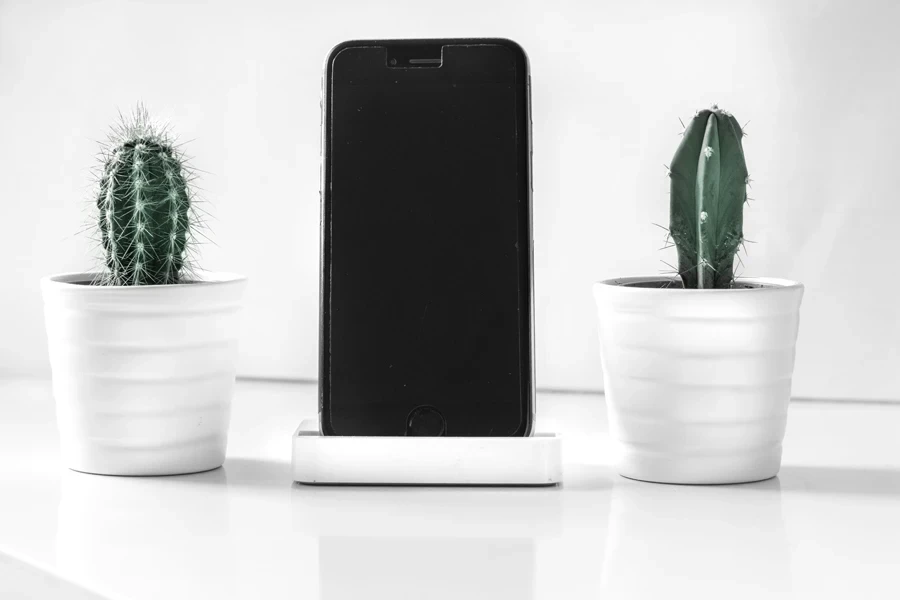
The latest self-watering planters feature smart sensors that monitor soil moisture levels, automatically watering plants when needed. Smart self-watering plant pots can also connect to a mobile app to send alerts, control water levels remotely, and adjust watering schedules.
Smart self-watering planters may even come with multiple sensors to monitor various types of information, including soil moisture, temperature, soil fertility, and the amount of water in the tank.
According to Google Ads, smart self-watering flower pots are experiencing a significant increase in interest. The term “smart plant pots” achieved a 3.1x increase in search volume over the four months between April and August last year, going from 3,600 to 14,800.
5. Indoor hydroponic systems
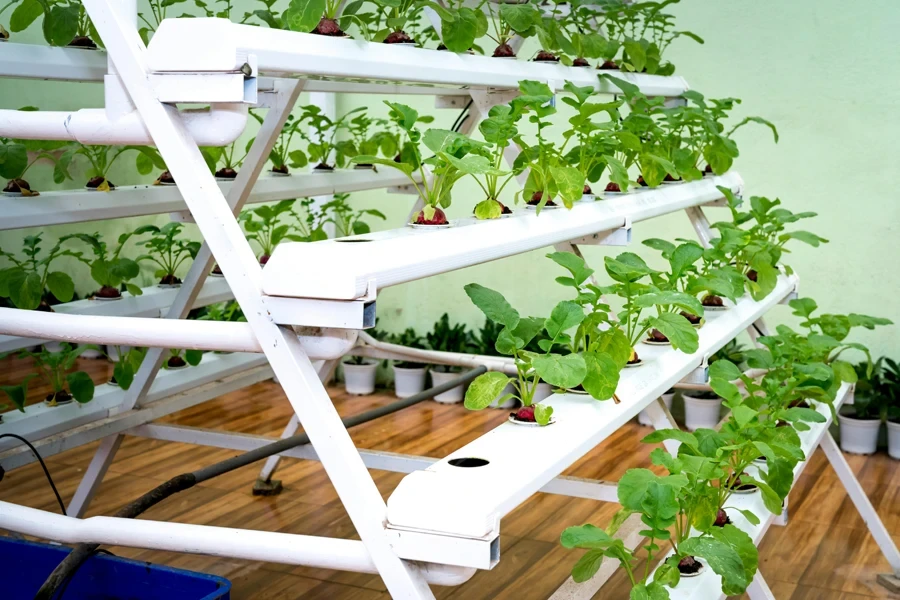
Indoor hydroponic systems are a type of garden that grows plants without soil. Indoor hydroponic gardens often come with an automatic watering feature because they use nutrient-rich water to feed the plants.
Hydroponic planters are generally designed as self-managed units that come with LED lights, water reservoirs, and nutrient dispensers. The integrated LED lighting in an indoor hydroponic planter can operate on a timer and be adjusted to different heights as the plants grow taller.
The term “indoor hydroponic garden” garnered a search volume of 9,900 in July and 12,100 in September, which equates to a 22% increase over the two months.
Summary
The latest self-watering planter trends offer exciting opportunities for businesses in the market. Large plant pots and compact or vertical planters offer solutions for a variety of spaces, while smart flowerpots and indoor hydroponic planters leverage the latest technological innovations to help avid gardeners grow a home. Self-watering plant pots made from sustainable materials also cater to the ongoing demand for eco-friendly garden products.
With a positive outlook for future market growth, businesses should stay ahead of the latest trends in the flower pot industry to improve their profits in the coming year.





 Afrikaans
Afrikaans አማርኛ
አማርኛ العربية
العربية বাংলা
বাংলা Nederlands
Nederlands English
English Français
Français Deutsch
Deutsch हिन्दी
हिन्दी Bahasa Indonesia
Bahasa Indonesia Italiano
Italiano 日本語
日本語 한국어
한국어 Bahasa Melayu
Bahasa Melayu മലയാളം
മലയാളം پښتو
پښتو فارسی
فارسی Polski
Polski Português
Português Русский
Русский Español
Español Kiswahili
Kiswahili ไทย
ไทย Türkçe
Türkçe اردو
اردو Tiếng Việt
Tiếng Việt isiXhosa
isiXhosa Zulu
Zulu